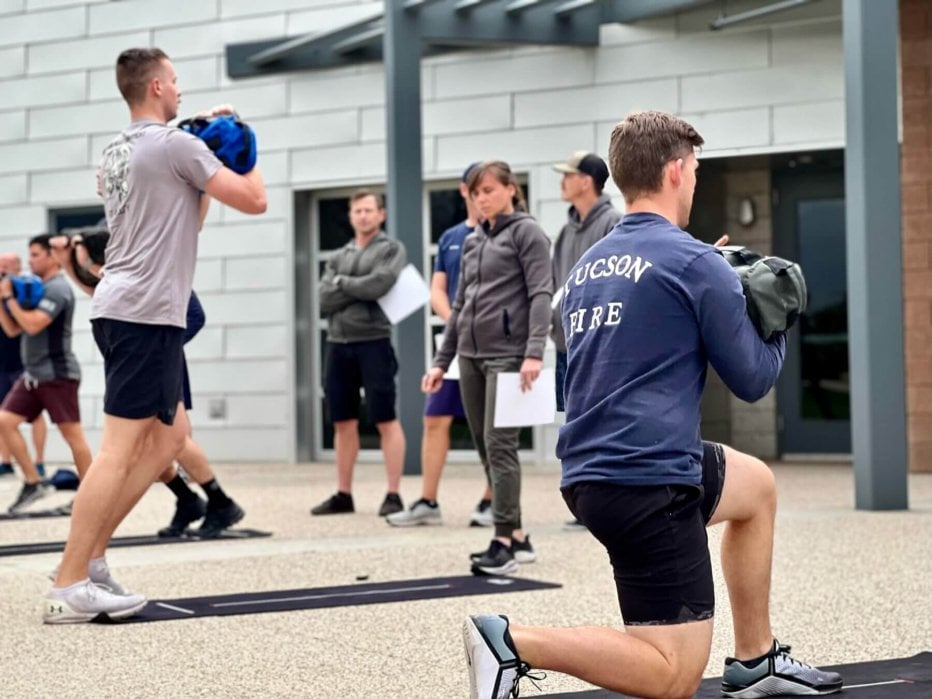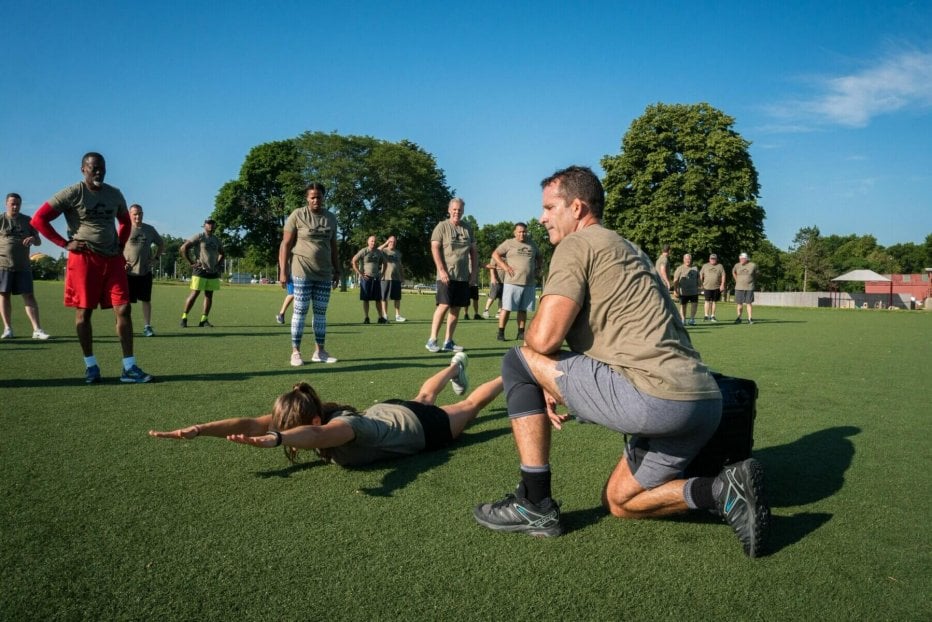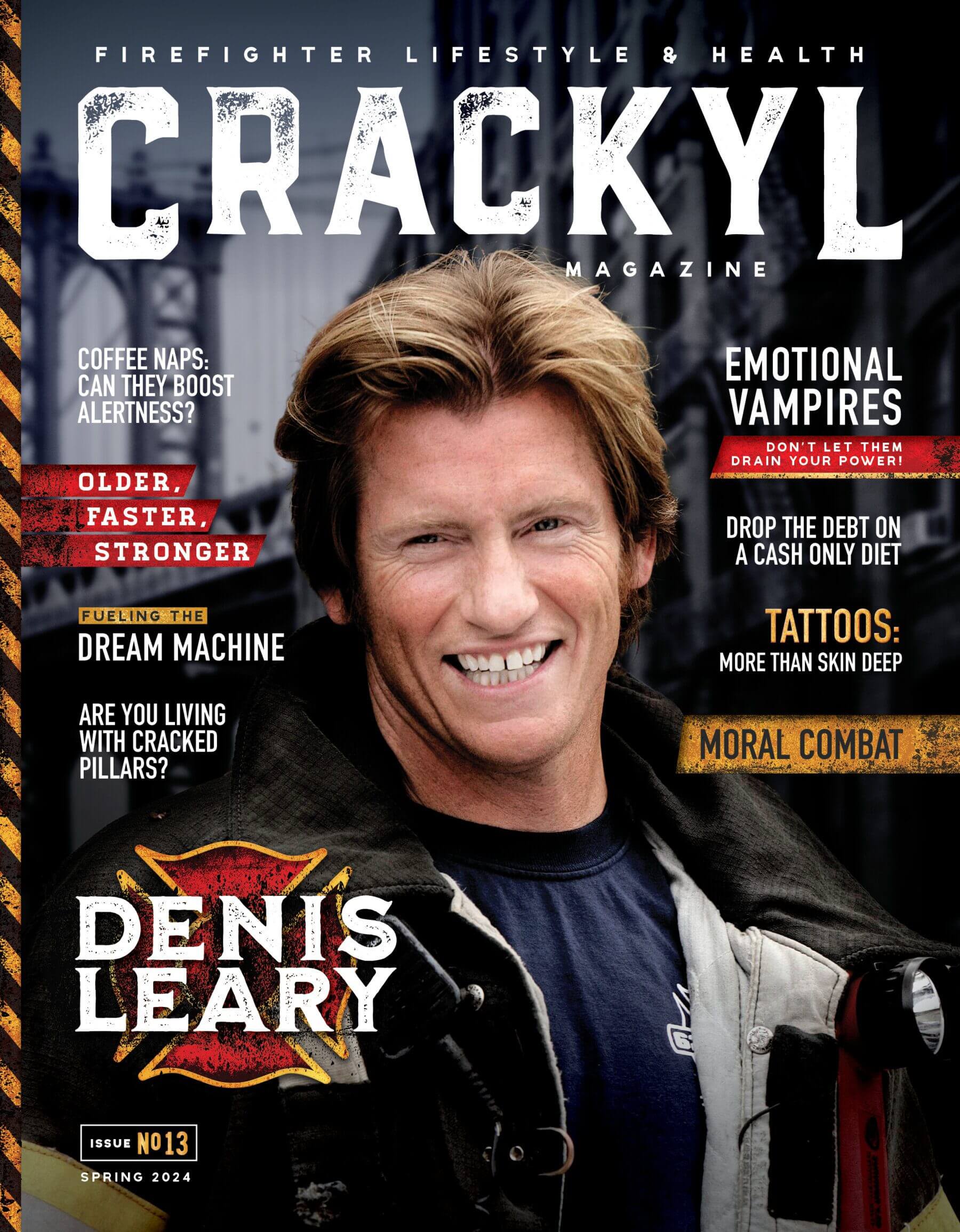5 Ways You May Be Doing Mobility Exercises Wrong

By: O2X Injury Prevention Specialist Antigone Vesci
Do you ever feel like you’re taking the time to stretch but aren’t getting any more flexible? You’re not alone. Most firefighters believe mobility exercises are good for them, so why is it that most also struggle with flexibility? If you aren’t seeing success, it’s likely not what you are doing but how you are doing it.
The first thing to understand is that there are two components required to reduce your risk for musculoskeletal injury: mobility and stability. Mobility is defined as how well something moves, while stability is how well something resists unwanted movement. Both are prerequisites to improving our movement quality or “form.”
Below are the 5 most common errors I see surrounding the performance of mobility exercises.
Error 1: Mobility is not a priority in your routine.
I get it, mobility work doesn’t feel as empowering or successful as strength training does, but it’s important to put first things first, and mobility is the priority. If you move well, then mobility exercises can become part of a quick warm-up; however, if you don’t move well, mobility exercises should make up 50-75% of your total exercise time.

Error 2: You’re not stretching long enough.
It takes 2-3 minutes of total time under tension to make a tissue longer. It doesn’t matter how the time is broken up (3 x 1 minute, 6 x 30 seconds, etc.), just that the total time is sufficient to create change. Our muscle tissue is elastic, like a rubber band, so it requires adequate time under tension to lengthen or “creep.” Creep is the capacity of tissue to lengthen when subjected to a constant tension load resulting in less resistance to a second load application (i.e. the next time you stretch, you are able to start at a further point). If you are trying to be efficient, cut the exercise in half and do them twice the time. Too often, I see people adding load to dysfunction. Move well, then add load.

Error 3: You’re confusing “stiff” with “short.”
Often, our tissues can feel tight or stiff but not actually be short. Since our joints are nourished by movement, the body will feel stiff after a prolonged period of inactivity, such as sitting or sleeping. The more we move, the better we feel because movement nourishes our joints which improves that feeling of stiffness. Shortness is when muscle or tissue is not long enough and restricts a joint from moving through its full range of motion. If you know what you are feeling, you will know what to do. If it’s stiff, move it; if it’s short, stretch it.

Error 4: You’re focusing on what the exercise looks like instead of what it feels like.
Multiple times a day, my patients ask me, “Does this look right?” My response remains, “Does it feel right?” This is the difference between teaching and telling. If you take ownership to understand what you should be feeling with each mobility exercise, it will not only ensure the stress is stretching the right area but also better translate into those workouts where no one is watching.

Error 5: You’re not strengthening through your full range.
After you’ve taken the time to improve your mobility, it’s important to immediately work the muscle within that new range of motion, even if you must lower the load. As the wise adage states, if you don’t use it, you’ll lose it.
If you stay consistent and purposeful, you’ll stay successful.
About O2X Injury Prevention Specialist Antigone Vesci:
Antigone Vesci is an accomplished O2X Injury Prevention Specialist currently serving as the Director of Performance Therapy at The Edge in Glenview, IL. With a background in athletic training and physical therapy, she has extensive experience working with a diverse range of clients, including professional athletes and those dealing with chronic pain. Antigone holds a Bachelor of Science in Athletic Training and a Doctorate of Physical Therapy from Boston University, and she completed a Fellowship in Orthopedic Manual Therapy at the University of Illinois at Chicago. She is an active member of professional organizations such as the National Athletic Training Association, American Physical Therapy Association, and American Academy of Orthopedic Manual Therapists. In her free time, Antigone enjoys painting, music, and volunteering as a medical health professional.
About O2X Human Performance:
O2X Human Performance provides comprehensive, science-backed programs to hundreds of public safety departments, federal agencies, and the military. O2X works with clients to elevate culture, improve mental and physical wellbeing, support healthy lifestyles, and reduce healthcare costs associated with injuries and illnesses. Driven by results and cutting edge research, O2X programs are designed and delivered by a team of Special Operations veterans, high level athletes, and hundreds of leading experts in their respective fields of human performance.
Podcast
Contests & Promotions
















